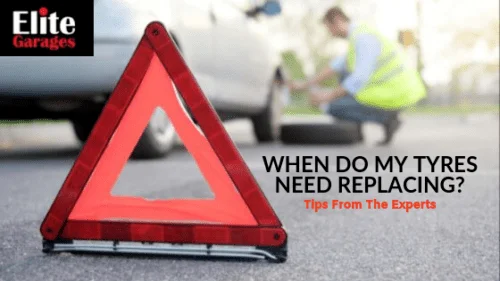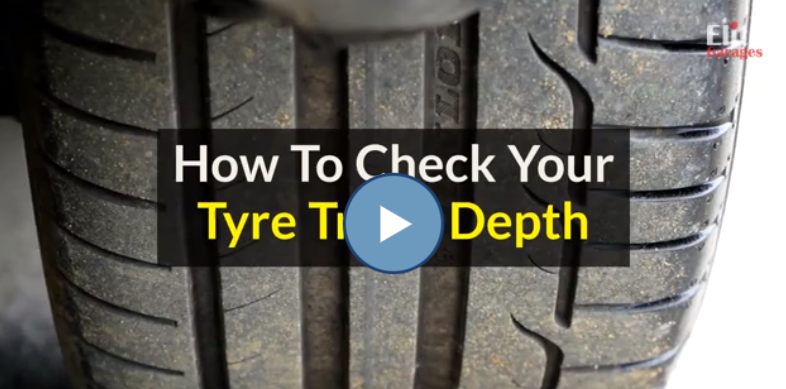
Tips For Replacing Your Tyres
Tyres Need Replacing: If you really think about it, car tyres are the only parts that connect your vehicle to the road. Yet, many people neglect their tyres and fail to understand their significant impact on general safety. Not taking care of car tyres affects acceleration, braking, directional force and even fuel consumption. It is essential to check your tyres regularly and know when to replace them.
While many believe it is better to replace all of your car tyres simultaneously, this not always possible or practical. Several factors play a part such as unforeseen damage and different rates of tyre wear between the front and rear. Let’s answer some of the most pressing questions regarding tyre condition and when to replace them.
How Long Should Car Tyres Last?
There is no set directive on how long a tyre will last as it depends on various factors. This includes the tyre design, driver’s habits, the climate, road conditions and level of tyre maintenance. There is, however, a simple guide to follow.
When your tyres are five years or older, a tyre expert should inspect them thoroughly at least once a year. According to Michelin, tyres older than 10 years after their date of manufacture should be replaced as a precaution. This also applies to a tyre that appear usable and not worn down to the tread wear indicator. Remember to include the spare tyre in your inspections as well.
What Effects Tyre Quality And Longevity?
As previously mentioned, several factors contribute to how long a tyre will last. Improper usage and poor driving habits are just two among many and below we’ve compiled a short list of a few more:
- Bad road conditions like potholes, kerbs, sharp objects and speed bumps
- Driving in extreme temperatures, rain, snow or ice
- Powerful sunlight and ozone effects
- Excessive speeding and braking
- Wheel spins (quick starts) and emergency braking
- Not seeing a professional when noticing a change in handling, noise and vibration
- Using summer tyres in winter conditions and vice versa
- Using incompatible wheels and rims
- Re-inflating a tyre that was completely flat
- Driving on a different sized spare tyre in excess of 50 mph
Tyre Pressure, Tread And Alignment
If you take good care of your tyres in terms of tread wear, wheel alignment and air pressure, you can substantially extend their lifespan. Always follow the vehicle manufacturer’s tyre replacement recommendations for original equipment. To determine the tyre’s manufacturing date, simply look for the DOT code on the sidewall of your tyres.
One of the most important tyre checks is the tread depth as it determines your level of grip and handling. When fitting new premium tyres, they will have a full 8 mm of tread. While the minimum legal tread depth is 1.6 mm, most motoring authorities recommend that you should change your tyres when they reach 3 mm. Visit any of our Elite Garages nationwide to book a FREE tyre safety check for added peace of mind.
Related: ‘6 Things To Know About Your Tyre Tread’
How To Check Your Tyre Tread
While professional centres can help check your tyre tread, you can also do it yourself. The simplest way is to use a tread depth gauge as it measures the inside and outside of your tread. If you don’t have one, they are relatively inexpensive and most auto centre will have stock.
Tyre manufacturers add tread wear indicators moulded into the tread grooves indicating whether a tyre is worn beyond the minimum safety limit. If you can see them, it’s time to replace your tyres. The marks on the tyre’s sidewall will help you find them.
Then there is the 20p coin test where you simply insert it into the main tread grooves and if you can’t see the outer band, your tread is above the legal limit. However, if the outer band of the coin is visible, you should replace your tyres.

When Should I Replace My Car Tyres?
Besides worn tyre tread, any lumps or bulges could mean that the tyre structure is compromised. An even more serious scenario that needs immediate attention is if you see internal metal cords of your tyres. During your inspection, keep an eye on uneven tread wear, nails, sharp stones, damaged valve caps and slow punctures. In addition to visual tyre checks, pay close attention to how the car drives and feels. When you experience a rough ride, there may be tyre damage or excessive wear.
Vibrations or other disturbances while driving could be potentially dangerous and you should slow down immediately and drive cautiously until you can safely pull over to check your tyres. If there is damage, deflate it and put on the spare. Even if you can’t see any physical damage, we recommend visiting your nearest service centre for a thorough inspection.
Expert Tyre Services At Elite Garages
We’ve established that tyres are clearly vital components of any vehicle and should always be well-maintained. Don’t sacrifice the safety of you, your family and other road users by ignoring the signs and trying to save a few pounds.
If you have any doubts about the condition of your car tyres, bring it to Elite Garages for a FREE tyre safety check. It can identify issues before they become dangerous and expensive to repair or replace. Early detection is key for keeping you and your family safe especially when it comes to tyres.
We offer exceptional value without any hidden costs or small print so make the call today if you need expert tyre advice. Our professional, experienced and friendly team is here to help you with all your vehicle needs.
About Us
Opening Times
Saturday : 8:30–4:00
Sunday : closed
More Information
Contact UsCustomer Information Pack
Check MOT Due Date
Free MOT reminder
Careers


